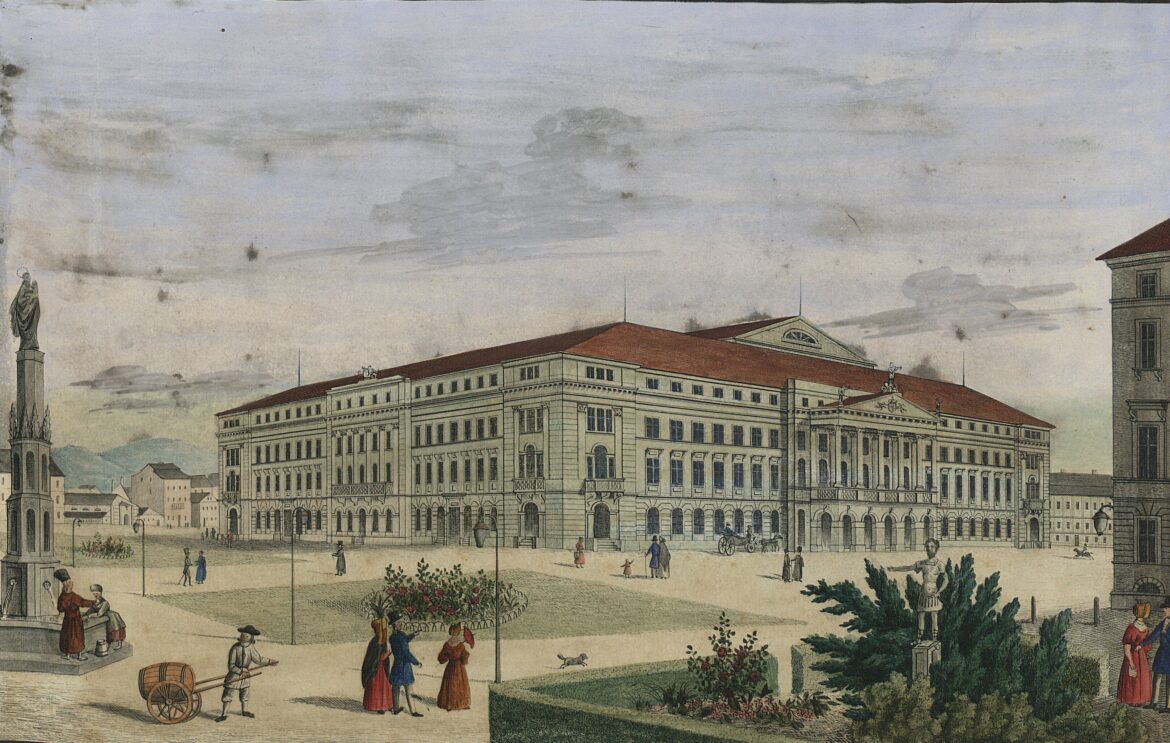Located in Lwów (today’s Lviv), the Skarbek Theatre is a unique example of classical architecture, whose creation is due to the generosity of the Polish Count Stanislaw Skarbek. It commenced its performance on 28 March 1842 and remained an important point in the cultural life of the city for nearly six decades, until its closure in 1900.
Led by Johann Salzmann and Ludwig Pichl, the construction of the building took five years. The theatre grew on the foundations of the former bastions, supported by 16,000 oak logs, reflecting the extraordinary care taken to ensure the stability of the structure. When it opened, the building was the largest theatre in Europe, with a capacity of 1,460 spectators. In addition to its theatrical functions, the edifice offered space for a hotel with some 300 rooms, shops, offices, cafés, and conference rooms, and even flats for personalities such as Artur Grottger and Juliusz Kossak.
Count Skarbek, as the founder, not only contributed his money to the construction of the theatre, but also took care of its future by establishing a foundation for retired actors and directors as well as donating the building to the city for a period of fifty years without paying rent. At the end of this period, the municipal authorities were obliged to pay an annual rent of 17,000 guldens.
The theatre’s early years were marked by the requirement to stage plays in German, due to pressure from the partitioning authorities. It is worth mentioning that in the 18th c. Poland lost its independence because of the partitions carried out by Russia, Prussia, and Austria. Lwów became part of the Austrian partition. From 1871, after Galicia gained autonomy, the theatre began to function exclusively with a Polish ensemble. In 1872, it added an opera and operetta stage, becoming the only such venue in Galicia, with guest performances by artists such as Ferenc Liszt and Niccolò Paganini.
In 1898, faced with the decapitalisation and obsolescence of the Skarbek Theatre building, it was decided to build a new facility, which eventually replaced the old premises. Today, the historic building houses the Maria Zankovetska Ukrainian Drama Theatre.





